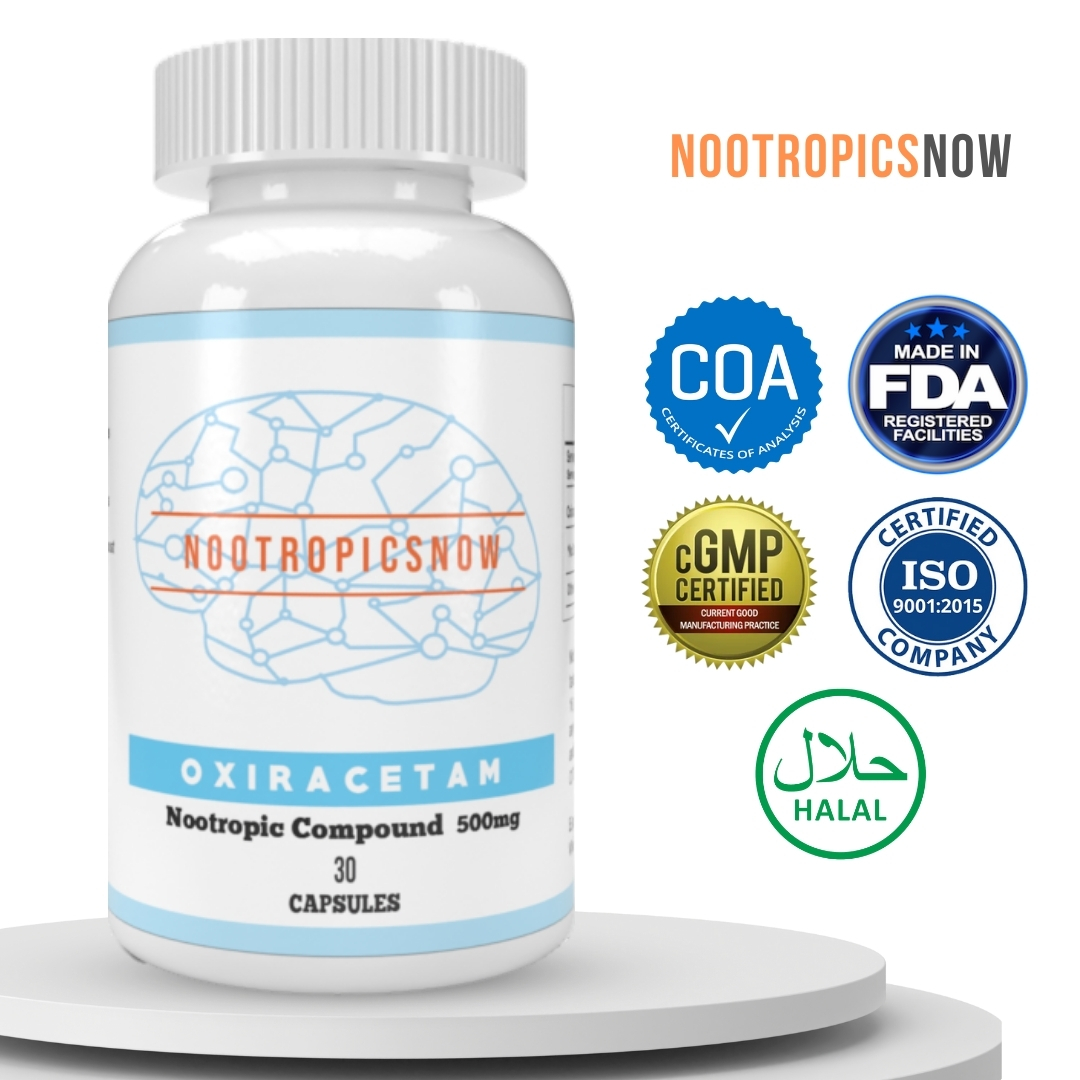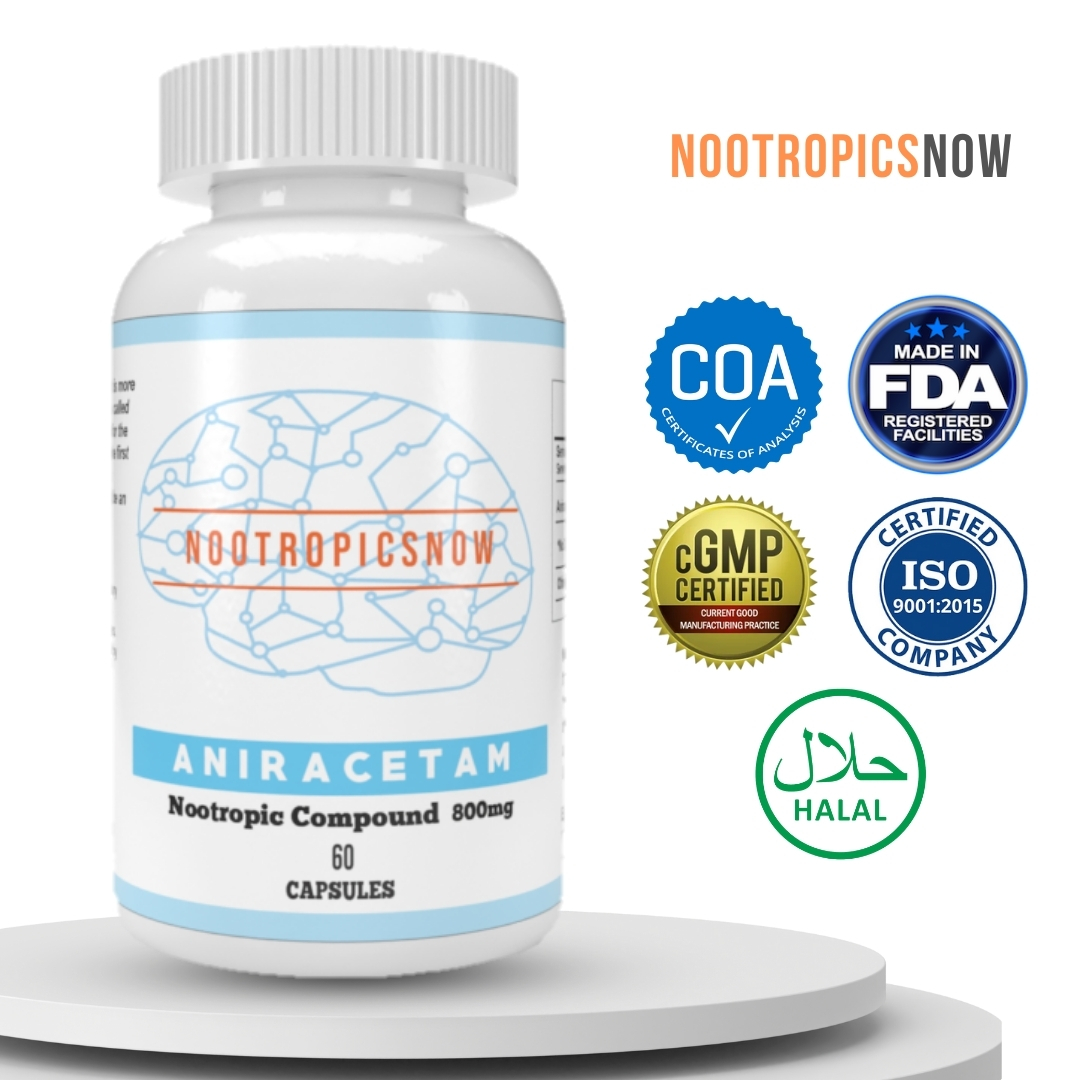Oxiracetam Long Term: Benefits, Risks & Effects

Oxiracetam: Unveiling Long-Term Effects on Cognitive Function
Oxiracetam, a synthetic derivative of piracetam, is a nootropic compound belonging to the racetam family. This class of drugs is known for its purported cognitive-enhancing properties. Many individuals use oxiracetam to boost memory, focus, and learning ability. Therefore, understanding the long-term effects of oxiracetam is crucial for making informed decisions about its use. While research is ongoing, available data suggests potential benefits and risks associated with prolonged use.
What is Oxiracetam?
Before delving into long-term effects, let’s briefly recap what oxiracetam is. Oxiracetam is a water-soluble ampakine nootropic believed to enhance cognitive function by modulating acetylcholine and glutamate neurotransmitter systems. These neurotransmitters play vital roles in learning, memory, and overall cognitive processing. Specifically, Oxiracetam works by increasing levels of the neurotransmitter acetylcholine in the brain. Therefore, this may enhance memory function. This distinguishes it from stimulants, which primarily affect dopamine and norepinephrine.
Long-Term Benefits: Exploring the Potential
Although more extensive research is required, some studies suggest several potential long-term benefits of oxiracetam usage. These reported benefits primarily revolve around cognitive performance, memory, and overall brain health.
1. Enhanced Memory and Learning
One of the primary reasons individuals turn to oxiracetam is its potential to improve memory and learning capabilities. While acute effects are often reported, the question remains whether these benefits persist over extended periods. Limited research and anecdotal evidence suggest that oxiracetam might contribute to long-term improvements in memory consolidation and retrieval. Further well designed, long-term research is required to confirm this.
2. Improved Cognitive Function
Beyond memory, oxiracetam has been linked to improvements in broader cognitive functions such as attention, concentration, and mental clarity. Many users report feeling more focused and alert, enabling them to tackle complex tasks with greater efficiency.
3. Neuroprotective Properties
Some preliminary research suggests that oxiracetam may possess neuroprotective properties, potentially safeguarding brain cells from damage and degeneration. This aspect is particularly relevant in the context of aging and neurodegenerative diseases.
4. Enhanced Cerebral Blood Flow
Oxiracetam can improve cerebral blood flow, which is crucial for maintaining healthy brain function. Adequate blood flow ensures that brain cells receive sufficient oxygen and nutrients, supporting optimal cognitive performance.
Potential Risks and Side Effects: A Cautious Approach
While oxiracetam is generally considered safe, especially compared to more potent nootropics, it’s important to acknowledge the potential risks and side effects associated with long-term use. These may vary from person to person.
1. Tolerance and Dependence
Like many substances, long-term use of oxiracetam may lead to tolerance, where the body becomes less responsive to its effects over time. Consequently, this may require individuals to increase the dosage to achieve the desired cognitive benefits. In some cases, dependence can develop, where individuals experience withdrawal symptoms upon discontinuing the drug.
2. Side Effects
Although relatively rare, some individuals may experience side effects such as headaches, anxiety, insomnia, or gastrointestinal discomfort. These side effects are usually mild and transient but can be bothersome for some users.
3. Interactions
Oxiracetam may interact with certain medications, supplements, or underlying health conditions. It’s important to consult with a healthcare professional before using oxiracetam, especially if you have any pre-existing medical conditions or are taking other medications.
4. Limited Long-Term Data
One of the primary challenges in assessing the long-term effects of oxiracetam is the limited availability of comprehensive, well-designed studies. Most of the available data comes from short-term trials or anecdotal reports, making it difficult to draw definitive conclusions about its long-term safety and efficacy.
Dosage Considerations for Long-Term Use
Determining the appropriate dosage of oxiracetam for long-term use requires careful consideration. As with any substance, individual responses can vary. Starting with a low dose and gradually increasing it as needed is generally recommended.
Oxiracetam Long Term Studies
Although the research in to the long term effects is limited, there are some studies that suggest long term positive benefits with minimal adverse side effects.
1. Improved Cognitive Performance Over Several Months
In individuals suffering from dementia (both Alzheimer’s and Multi-Infarct), tests showed significant improvement in memory and cognitivity over a six month period. Therefore, this suggests that longer term treatment is beneficial.
2. Limited to No Significant Side Effects
The research into longer term use suggests that there are no significant adverse side effects.
3. Improvements to Cerebral Blood Flow
There is evidence that the S-isomer of oxiracetam increases cerebral blood flow, which is crucial for maintaining normal brain functioning. This increase in blood flow can help mitigate the effects of chronic cerebral hypoperfusion, such as those seen in dementia.
Alternatives to Oxiracetam
There are several alternatives that one could explore that also have potential long term benefits. These include:
1. Bacopa Monnieri
Bacopa Monnieri, an herb that has been used in traditional Indian medicine, has evidence that suggests long term benefits include improved cognitive function.
2. Lion’s Mane Mushroom
Lion’s Mane Mushroom is another natural nootropic that provides longer term improvements to cognition by reducing neuro inflammation and reducing neurodegeneration.
View Product-Nootropic-Memory-Booster-Supplement-Focus-i.202321183.3851668485)
3. Caffeine + L-Theanine
Caffeine + L-Theanine can be a great alternative to improve focus and cognition without the potential crash from Caffeine.
View Product-(60-capsules-30-servings)-Nootropic-Brain-Booster-i.202321183.4251327469)
Responsible Use and Precautions
To maximize the potential benefits and minimize the risks associated with long-term oxiracetam use, it’s important to adopt a responsible approach. This includes:
Legal Considerations
It is also crucial to understand the legal status of oxiracetam in your country or region. In some places, it may be classified as a prescription drug, while in others, it may be available over-the-counter. Ensure that you comply with all applicable laws and regulations regarding the purchase and use of oxiracetam.
Conclusion: Navigating the Long-Term Landscape
The long-term effects of oxiracetam on cognitive function remain an area of ongoing research and debate. While some studies and anecdotal reports suggest potential benefits such as enhanced memory, improved cognitive function, and neuroprotective properties, it’s essential to approach these claims with caution. The available data is limited, and more extensive research is needed to fully understand the long-term safety and efficacy of oxiracetam.
Until more definitive evidence becomes available, it’s crucial to adopt a responsible approach to oxiracetam use, consulting with healthcare professionals, starting with low doses, monitoring your response, and cycling its use to prevent tolerance and dependence. By doing so, you can maximize the potential benefits while minimizing the risks and making informed decisions about incorporating oxiracetam into your long-term cognitive enhancement strategy.
Oxiracetam: Long-Term Effects and Benefits
Oxiracetam, a synthetic derivative of piracetam, has garnered attention as a potential cognitive enhancer. While its short-term effects are relatively well-documented, the long-term impacts of oxiracetam use are an area of ongoing research and considerable interest. This section delves into the potential benefits and risks associated with prolonged oxiracetam consumption, exploring its mechanisms of action, clinical applications, and safety profile.
Understanding Oxiracetam’s Mechanism of Action
Oxiracetam primarily influences cognitive function by modulating neurotransmitter systems within the brain. Specifically, it affects the cholinergic and glutamatergic systems, playing a vital role in memory, learning, and overall cognitive processing. The drug enhances the release and uptake of acetylcholine, a neurotransmitter crucial for memory consolidation and synaptic plasticity. Furthermore, it modulates the activity of glutamate receptors, contributing to excitatory neurotransmission involved in learning and memory processes. These combined actions promote improved cognitive performance and neuronal communication.
Importantly, oxiracetam also impacts cerebral blood flow, enhancing oxygen and nutrient delivery to brain cells. This increased perfusion contributes to optimal neuronal function and energy metabolism, particularly beneficial during cognitive tasks. This enhancement of cerebral blood flow is thought to contribute to its neuroprotective effects, safeguarding neurons from damage and promoting overall brain health. Consequently, improved cognitive function is observed as a result.
Cognitive Benefits of Long-Term Oxiracetam Use
Research suggests that long-term oxiracetam use can lead to various cognitive enhancements. Studies involving individuals with age-related cognitive decline or dementia have demonstrated improvements in memory, attention, and overall cognitive function. For instance, long-term administration of oxiracetam resulted in improved scores on cognitive assessments such as the Mini-Mental State Examination (MMSE), which evaluates various cognitive domains. Moreover, the observed enhancements extended beyond memory, encompassing improvements in focus, concentration, and even processing speed.

View Product
Furthermore, long-term oxiracetam use might promote neuroplasticity, the brain’s ability to reorganize itself by forming new neural connections. This plasticity is critical for learning and adaptation, allowing the brain to compensate for damage or age-related decline. By supporting neuroplasticity, oxiracetam may contribute to long-term cognitive resilience and adaptability. Therefore, the combination of enhanced neurotransmitter activity, cerebral blood flow, and neuroplasticity contributes to the potential for sustained cognitive benefits.
Clinical Applications and Research Findings
Oxiracetam has been investigated as a potential treatment for various cognitive disorders, including Alzheimer’s disease and vascular dementia. Clinical trials have explored its efficacy in improving cognitive function and daily living activities in patients with these conditions. Some studies have reported positive outcomes, with patients showing improvements in memory, attention, and overall cognitive performance after long-term oxiracetam treatment. For example, a six-month trial involving patients with Alzheimer’s disease demonstrated significant improvements in cognitive function and daily living skills compared to a placebo group.
However, it’s crucial to acknowledge that research findings on oxiracetam’s efficacy in treating cognitive disorders remain somewhat mixed. Some studies have shown significant benefits, while others have reported modest or no improvements. This variability might be attributed to differences in study design, patient populations, and outcome measures. Further research with larger sample sizes and standardized methodologies is necessary to definitively determine the effectiveness of oxiracetam in treating specific cognitive disorders. Furthermore, research is needed to investigate the optimal dosage and duration of treatment for different patient populations.
Safety Profile and Potential Side Effects
Generally, oxiracetam exhibits a favorable safety profile, with few reported side effects. Clinical trials have indicated that oxiracetam is well-tolerated by most individuals, even during long-term use. The most commonly reported side effects are mild and transient, including headaches, insomnia, and gastrointestinal disturbances. These side effects are typically mild and resolve spontaneously without requiring medical intervention.

View Product
However, it’s important to note that the safety of long-term oxiracetam use has not been extensively studied in all populations. Individuals with pre-existing medical conditions, such as kidney or liver problems, may be at higher risk of experiencing adverse effects. Similarly, the safety of oxiracetam in pregnant or breastfeeding women has not been established. Therefore, it’s essential to consult with a healthcare professional before starting oxiracetam, especially if you have any underlying health conditions or are taking other medications. Although rare, it is essential to consider individual sensitivities and potential drug interactions.
Dosage Considerations for Long-Term Use
The optimal dosage of oxiracetam for long-term use varies depending on individual factors such as age, weight, and cognitive status. However, a typical dosage range is 800-1600 mg per day, divided into two or three doses. It’s generally recommended to start with a lower dose and gradually increase it as needed, monitoring for any potential side effects. Some individuals may experience cognitive benefits at lower doses, while others may require higher doses to achieve optimal results. Ultimately, the appropriate dosage is highly individualized.
It’s also important to consider the potential for tolerance to develop with long-term oxiracetam use. Tolerance occurs when the body becomes less responsive to a drug over time, requiring higher doses to achieve the same effects. To mitigate the risk of tolerance, it’s recommended to cycle oxiracetam use, taking breaks from the drug periodically. For example, some individuals may choose to use oxiracetam for several weeks or months, followed by a break of several weeks before resuming use. Cycling oxiracetam can help prevent tolerance and maintain its effectiveness over the long term.
Comparing Oxiracetam to Other Nootropics
Oxiracetam is one of many nootropics available, each with its own unique properties and effects. Compared to other nootropics, oxiracetam is often considered to be more stimulating and energizing, while others, such as piracetam, are known for their cognitive-enhancing effects without significant stimulation. The racetam family, including aniracetam and pramiracetam, all share similar mechanisms but vary in potency and specific effects.

View Product
Some people may find oxiracetam to be particularly effective for improving focus, concentration, and mental clarity, while others may prefer other nootropics for memory enhancement or mood regulation. Ultimately, the best nootropic for an individual depends on their specific cognitive goals and individual response to the drug. Combining oxiracetam with other nootropics, known as stacking, is another common approach. For example, combining oxiracetam with choline supplements like Alpha-GPC may enhance its cholinergic effects and improve memory and learning. However, it’s important to research and carefully consider the potential interactions and side effects of any nootropic stack before starting.
Potential Risks and Precautions
Although oxiracetam is generally considered safe, there are several potential risks and precautions to be aware of before using it long-term. As previously mentioned, individuals with pre-existing medical conditions, such as kidney or liver problems, may be at higher risk of experiencing adverse effects. Oxiracetam is primarily cleared through the kidneys, so impaired renal function could lead to drug accumulation and increased side effects. Similarly, liver dysfunction may affect the metabolism of oxiracetam, potentially increasing its toxicity. Therefore, it’s essential to consult with a healthcare professional before starting oxiracetam if you have any underlying health conditions.
Additionally, it is crucial to avoid combining oxiracetam with other drugs that affect the central nervous system, such as sedatives, tranquilizers, or alcohol. These combinations can potentiate the effects of oxiracetam and increase the risk of adverse effects. Similarly, people taking anticoagulant medications, such as warfarin, should exercise caution when using oxiracetam, as it may increase the risk of bleeding.
Ethical Considerations and Responsible Use
As with any cognitive enhancer, it’s essential to consider the ethical implications of using oxiracetam long-term. While oxiracetam may offer cognitive benefits, it’s not a substitute for healthy lifestyle habits such as adequate sleep, regular exercise, and a balanced diet. Relying solely on nootropics for cognitive enhancement without addressing underlying health factors can be detrimental in the long run. These drugs are not intended to replace healthy lifestyle choices.
Furthermore, it’s essential to use oxiracetam responsibly and avoid abusing it or using it for non-medical purposes. Nootropics are intended to enhance cognitive function, not to gain an unfair advantage in academic or professional settings. It is vital to ensure the use of these drugs does not encourage academic dishonesty or compromise professional ethics. By using oxiracetam responsibly and ethically, individuals can maximize its potential benefits while minimizing the risk of harm.
Future Research Directions
While existing research provides insights into the long-term effects of oxiracetam, further investigation is needed to fully understand its potential benefits and risks. Future research should focus on several key areas. Firstly, larger, well-controlled clinical trials are needed to confirm the efficacy of oxiracetam in treating specific cognitive disorders, such as Alzheimer’s disease and vascular dementia. These trials should utilize standardized methodologies and outcome measures to ensure the results are reliable and comparable.
Secondly, more research is needed to investigate the mechanisms of action of oxiracetam and how it affects brain function over the long term. This could involve neuroimaging studies to assess changes in brain activity and connectivity, as well as biochemical analyses to evaluate the effects of oxiracetam on neurotransmitter systems and neuronal metabolism. Finally, future research should explore the potential for personalized approaches to oxiracetam use, tailoring dosage and treatment regimens to individual characteristics and cognitive goals. By addressing these key areas, future research can provide a more comprehensive understanding of the long-term effects of oxiracetam and optimize its use for cognitive enhancement.


